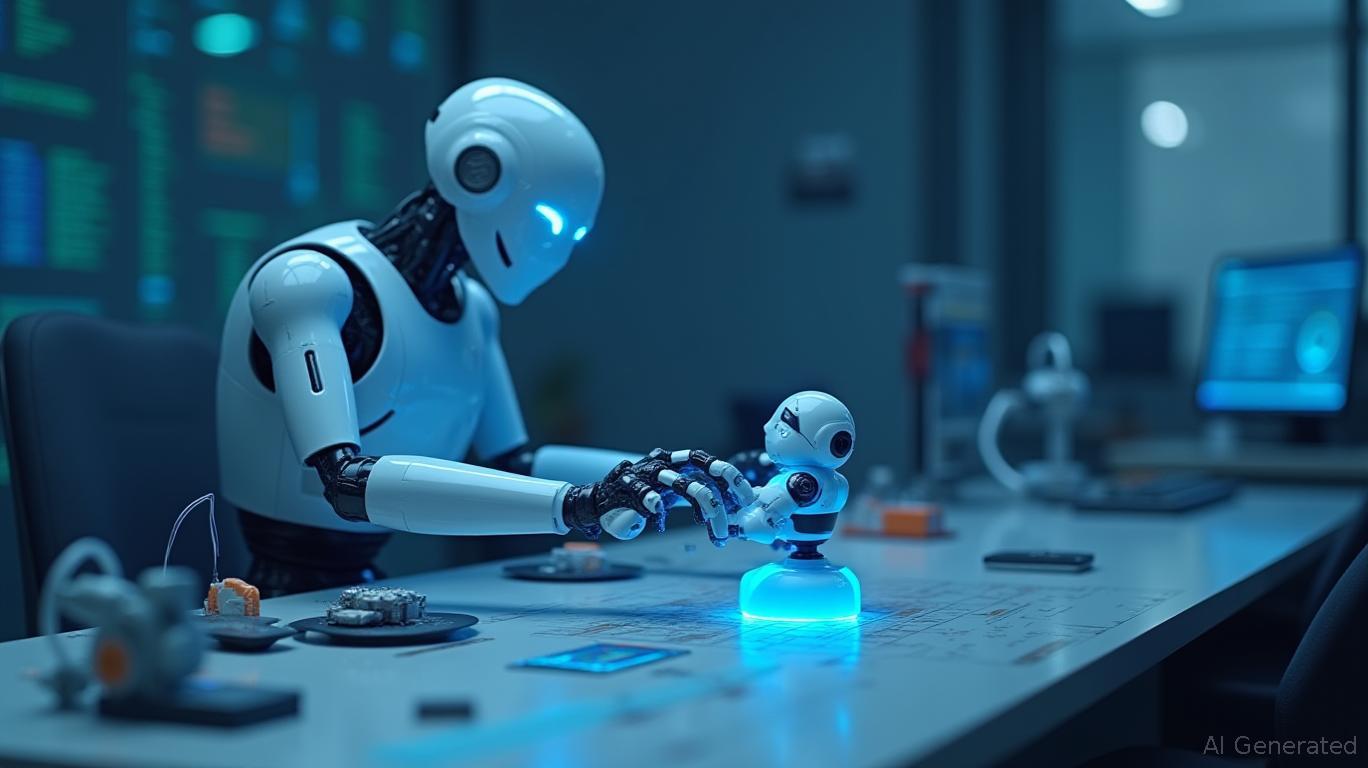Hugging Face's Robotics Gambit: How Open-Source Innovation Could Usher in a New Era of AI Hardware Democracy
The robotics industry is on the cusp of a revolution. On May 26, 2025, Hugging Face—a pioneer in AI language models—announced its entry into the hardware sector with two groundbreaking robots: HopeJR, a full-size humanoid priced at $3,000, and Reachy Mini, a desktop companion at $250–$300. These devices are not just products; they are weapons in a war to democratize robotics. By marrying open-source philosophy with affordable hardware, Hugging Face is challenging the monopolistic grip of industry giants like Boston Dynamics and Tesla, while unlocking a $210 billion global robotics market (2025 estimate). This is a once-in-a-decade opportunity for investors to back a company poised to redefine the AI-hardware convergence.
The Problem: Robotics as an Exclusivity Club
Today's robotics market is a playground for the wealthy. Boston Dynamics' Spot robot, for example, costs $74,000, while industrial-grade robots often exceed $200,000. Proprietary systems and closed ecosystems stifle innovation, leaving startups, researchers, and hobbyists on the sidelines. Hugging Face's solution? Open-source hardware.
HopeJR, with its 66 actuated degrees of freedom (DOF), and Reachy Mini, capable of speech and object manipulation, are designed to be modular, hackable, and community-driven. Their pricing—90% cheaper than competitors—breaks down financial barriers, while their open-source codebases eliminate technical ones.

Strategic Advantages: Open-Source as a Moat
Hugging Face's move is not merely about hardware; it's about ecosystem dominance. The company's LeRobot platform, launched in 2024, provides AI models, datasets, and tools to train and deploy robotics systems. By integrating its AI expertise with open-source hardware, Hugging Face creates a virtuous cycle:
- Community-Driven Innovation: Developers worldwide can contribute to HopeJR and Reachy Mini's software, accelerating features like autonomous navigation or object recognition.
- Cost Efficiency: Hugging Face's acquisition of Pollen Robotics in April 2025 provided critical robotics expertise, while partnerships with firms like Yaak (self-driving algorithms) and The Robot Studio (3D-printed arms) ensure scalable production.
- Anti-Monopoly Play: Open-source design prevents monopolization. Unlike Apple or Google's walled gardens, Hugging Face's platform invites competition and collaboration.
Disruptive Potential: The $210 Billion Prize
The global robotics market is projected to grow at a 12.5% CAGR through 2030, driven by automation in manufacturing, healthcare, and logistics. Hugging Face's strategy targets three critical gaps:
- Affordability: At $250–$3,000, HopeJR and Reachy Mini open robotics to SMEs, universities, and individual developers. Compare this to Boston Dynamics' $74,000 Spot, which is niche.
- Accessibility: Plug-and-play AI tools on LeRobot let users deploy models like LLaMA or BERT on robots, enabling tasks from warehouse sorting to customer service.
- Scalability: The open-source model fosters a third-party developer ecosystem, akin to Android's app stores. Already, 3D-printed arms like SO-101 (from The Robot Studio) showcase community innovation.
The Investment Thesis: A Buy Signal Now
Hugging Face is uniquely positioned to capitalize on this shift. Its existing AI platform (used by 1.5 million developers) provides a ready audience for hardware. The waitlist for HopeJR/Reachy Mini is already growing, with first shipments expected by year-end 2025.
- Valuation: Hugging Face's April 2025 valuation hit $6 billion post-Pollen acquisition. As robotics adoption accelerates, this could double in 12–18 months.
- Competitive Edge: While rivals focus on proprietary systems, Hugging Face's open-source model attracts talent and partnerships. Its $3,000 HopeJR outperforms Tesla's Optimus (estimated $20k+ cost) in both price and DOF (40 vs. 66).
- Market Capture: The $210 billion robotics market is fragmented. Hugging Face's low-entry, high-value approach could claim a 10–15% share within five years.
Risks and Mitigations
- Tariffs and Manufacturing Costs: Potential price hikes could limit affordability. Hugging Face's partnerships with global manufacturers (e.g., Foxconn) mitigate this.
- Competitor Copycat Strategies: Open-source models are hard to patent. Hugging Face's first-mover advantage and ecosystem lock-in (via LeRobot) protect against clones.
Conclusion: Act Now or Miss the Next Big Thing
Hugging Face's robotics play is a strategic masterstroke. By democratizing hardware and AI, it's not just building robots—it's creating a new industry standard. The timing is perfect: as AI matures, the demand for physical applications will explode. Investors who miss this wave may look back in 2030 and regret ignoring a $210 billion opportunity.
The question is clear: Do you want to own a piece of the future—or let it pass you by?
Invest Now. The robots are coming—and they're here to stay.

Comments
No comments yet